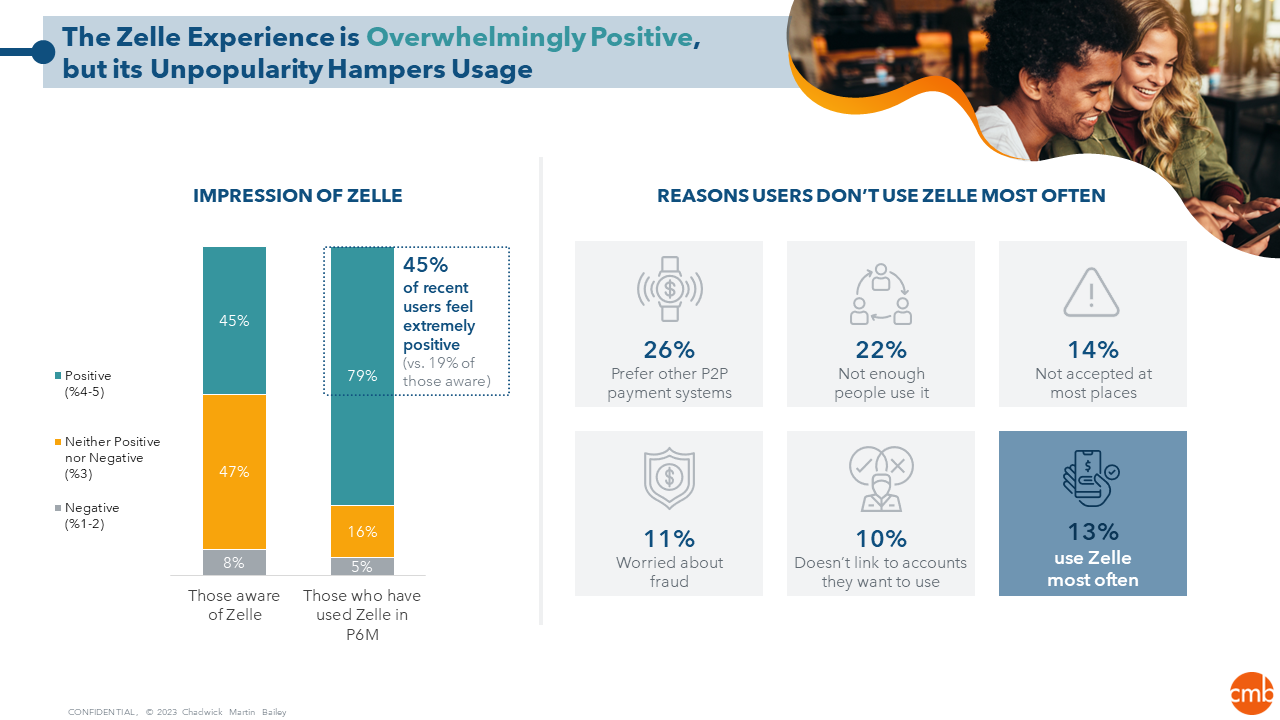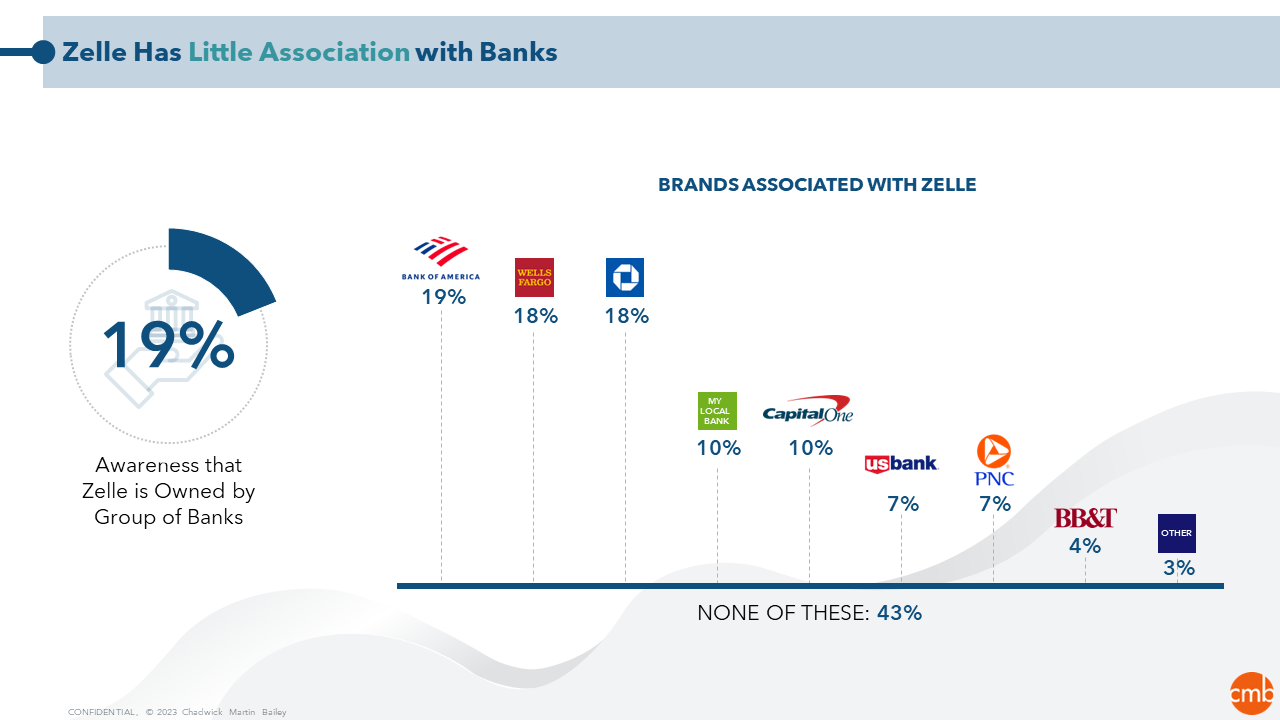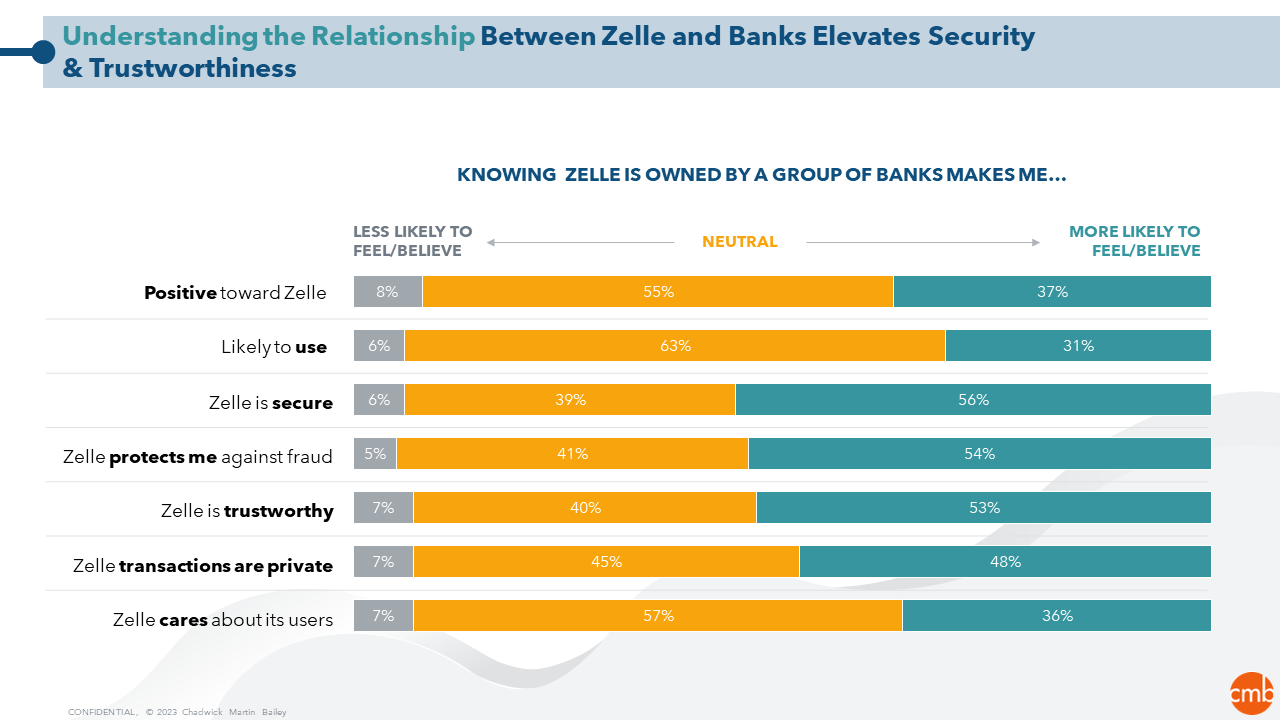Insights about Zelle from CMB’s Peer-to-peer Payments Trends Research
About a 2 min. read.
Brand awareness is critical to a brand’s ability to engage consumers and grow. It helps get the right product (yours) to the right people at the right time. It’s a core part of brand health trackers, which aim to help brands evaluate how they perform with consumers as well as the impact of their campaigns and other market actions. One of the best ways to increase your brand awareness is through word-of-mouth marketing, as consumers tend to trust their friends and family over traditional advertising.
Peer-to-peer payments (P2P), in particular, relies heavily on word-of-mouth recommendations for its loyalty and growth. Using P2P is all about convenience (what’s an ATM?), and our society has become accustomed to doing just about anything from our phones, including sending or requesting money from our friends. Our P2P usage, and the platform(s) we select, is determined by whether those around us use/accept it – have you ever had a moment where you tried to Venmo someone who doesn’t use Venmo? As such, this is a powerful barrier for new platforms to overcome.
As FinTechs and P2P payment apps boom, traditional banks are left to catch up. Having a strong brand health audit and action program is critical to their success. Let’s take Zelle for an example.
Zelle is a P2P payment platform owned by a group of banks (Bank of America, Truist, Capital One, JPMorgan Chase, PNC Bank, U.S. Bank, and Wells Fargo). In CMB’s recent P2P research, we discovered that Zelle has high satisfaction among users, but reasons for not using it include competing P2P platforms and a relative lack of use/acceptance from others.

Zelle has a unique opportunity to reach folks who prefer traditional banks, and the knowledge that Zelle is owned by a group of banks increases consumers’ sense of security and trust in Zelle. Unfortunately, awareness of this fact is low so increasing this awareness may help increase usage. This recommendation is demonstrated in our research – 31% of those aware of Zelle said they might be more likely to use Zelle knowing that it is owned by a group of banks.


For Zelle, increasing awareness of its association with traditional banks may be important to increasing usage and overcoming the hurdle of general acceptance. It’s more than just brand awareness, for Zelle it’s increasing awareness of a major selling point.
Interested in learning more about strengthening your brand health and position for long-term success? Or more details, like about Zelle, from our P2P research not included in our report? Contact us today.